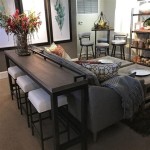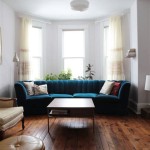Sectional Couch Living Room Sets: A Comprehensive Guide
The sectional couch living room set represents a versatile and practical solution for furnishing a variety of living spaces. Its modular design allows for diverse configurations, accommodating numerous seating arrangements and adapting to different room sizes and layouts. Understanding the nuances of sectional couches, from their different types to material considerations and stylistic options, is crucial for making an informed purchase that aligns with specific needs and aesthetic preferences.
This article provides a comprehensive overview of sectional couch living room sets, exploring their different forms, materials, styles, and considerations for integrating them effectively into a living room environment. The aim is to equip readers with the knowledge necessary to navigate the market and select a sectional couch that complements their lifestyle and enhances their living space.
Understanding the Anatomy of a Sectional Couch
The fundamental characteristic of a sectional couch lies in its modular construction. Unlike traditional sofas, which are typically single, fixed units, sectionals comprise multiple individual sections that can be arranged in various configurations. These sections commonly include armless chairs, corner pieces, ottomans, and chaise lounges. The flexibility afforded by this modular design is a primary advantage of sectional couches.
Each section is typically connected to another using a latching or interlocking mechanism. While these mechanisms vary between manufacturers, their primary function is to maintain the stability and integrity of the overall sectional configuration. Some systems employ metal brackets that slide together and lock, while others utilize simpler, clip-based systems. Understanding the type of connection system is important, as it can impact the ease of assembly, disassembly, and reconfiguration.
The overall shape of a sectional is determined by the specific combination of sections. Common configurations include L-shaped sectionals, which feature two or more sections joined at a right angle, and U-shaped sectionals, which typically incorporate three or more sections creating a more enclosed seating area. Straight sectionals, consisting of multiple armless chairs joined together, are also a viable option for longer, narrower living rooms.
Many sectional couches also offer additional features, such as built-in recliners, cup holders, USB charging ports, and hidden storage compartments. These features further enhance the functionality and convenience of the sectional, making it a central hub for relaxation and entertainment.
Exploring Different Materials and Construction
The materials used in the construction of a sectional couch significantly impact its durability, comfort, and overall aesthetic appeal. The frame, cushioning, and upholstery are the key material components to consider.
The frame provides the structural foundation of the sectional and is typically constructed from hardwood, softwood, or engineered wood such as plywood or particleboard. Hardwood frames, such as those made from maple or oak, are known for their strength and durability, making them a preferred choice for high-quality sectionals. Softwood frames, such as those made from pine, are more affordable but may not be as resistant to wear and tear over time. Engineered wood frames offer a balance of affordability and durability, provided they are constructed with high-quality materials and proper joinery techniques.
The cushioning provides support and comfort and is typically composed of foam, fiberfill, or a combination of both. Foam cushions offer a firmer feel and tend to retain their shape better over time. High-density foam is particularly durable and provides excellent support. Fiberfill cushions are softer and more plush but may require more frequent fluffing to maintain their shape. Some sectionals also incorporate down feathers for added comfort and luxury.
The upholstery material is the visible surface of the sectional and plays a significant role in its overall look and feel. Common upholstery materials include fabric, leather, and synthetic leather (also known as faux leather or vegan leather). Fabric upholstery offers a wide range of colors, patterns, and textures, making it a versatile choice for different decorating styles. Popular fabric options include cotton, linen, polyester, and microfiber. Leather upholstery is known for its durability, luxurious feel, and classic appeal. Genuine leather is more expensive than synthetic leather but offers superior quality and longevity. Synthetic leather provides a more affordable alternative and is often easier to clean and maintain.
The choice of materials should be based on factors such as intended use, lifestyle, and budget. For example, households with children or pets may benefit from durable and stain-resistant upholstery materials, while those prioritizing comfort and luxury may opt for high-quality leather or down-filled cushions.
Styling and Integrating a Sectional Couch into a Living Room
A sectional couch can be a focal point in a living room, and its style should complement the overall aesthetic of the space. Sectional couches are available in a wide range of styles, from traditional to modern to contemporary, allowing for seamless integration with various decorating schemes.
Traditional sectional couches often feature classic design elements such as rolled arms, button tufting, and ornate detailing. These sectionals are typically upholstered in rich fabrics like velvet or brocade and are often paired with traditional furniture and accessories. Modern sectional couches, on the other hand, tend to have clean lines, minimalist designs, and neutral color palettes. They are often upholstered in sleek fabrics like leather or microfiber and are paired with contemporary furniture and artwork.
Contemporary sectional couches blend elements of both traditional and modern styles, offering a balance of comfort, style, and functionality. These sectionals may feature clean lines and minimalist designs but also incorporate plush cushions and comfortable upholstery. They are often paired with a mix of modern and traditional furniture and accessories.
The size and configuration of the sectional should be carefully considered in relation to the size and layout of the living room. A large sectional may overwhelm a small living room, while a small sectional may appear lost in a large living room. It is important to measure the living room space and map out the desired configuration before purchasing a sectional. The sectional should be positioned in a way that allows for easy circulation and does not obstruct doorways or windows.
The color and texture of the sectional should also be carefully considered. A neutral-colored sectional can serve as a versatile backdrop for other furniture and accessories, while a brightly colored sectional can add a pop of visual interest to the space. The texture of the upholstery material can also impact the overall feel of the living room. A plush velvet sectional can add a touch of luxury and comfort, while a sleek leather sectional can create a more modern and sophisticated look.
Accessories such as throw pillows, blankets, and rugs can be used to further enhance the style and comfort of the sectional. Throw pillows can add color, texture, and pattern to the sectional, while blankets can provide warmth and comfort. A rug can anchor the sectional and define the seating area, creating a cohesive and inviting living room space.
Lighting is another important factor to consider when integrating a sectional couch into a living room. Adequate lighting can enhance the overall ambiance of the space and make the sectional more inviting. Table lamps, floor lamps, and overhead lighting can be used to create a layered lighting scheme that complements the style of the sectional and the overall decor of the living room.
Ultimately, the key to successfully integrating a sectional couch into a living room is to choose a sectional that is both comfortable and stylish and that complements the overall aesthetic of the space. Careful consideration of the size, configuration, material, and style of the sectional, as well as the surrounding furniture and accessories, can create a living room that is both functional and visually appealing.

Modular Sectional Couches Sofas Lovesac Sactionals

Honbay Oversized Modular Sofa Set Sectional Couch For Living Room Bluish Grey

Modular Sectional Couches Sofas Lovesac Sactionals

Homall 8 Seats Oversized Modular Sectional Sofa With Ottomans Convertible U Shaped Couch Variable Set Soft Seat

S Furniture Mccobb 7pcs Recliner Sectional Sofa In Gray Jennifer

Dawson 5 Piece Modular Sectional Bob Mills Furniture

How To Arrange Sectionals In A Living Room

Clihome 112 In Polyester Sectional Sofa Couches Grey Living Room Sets With Ottoman And 3 Pillows Cl Us46001 The Home

L Shape Sofa Set Versatile Small Sectional Gkw Retail

How To Place A Sectional In Your Living Room Home Zone Furniture








